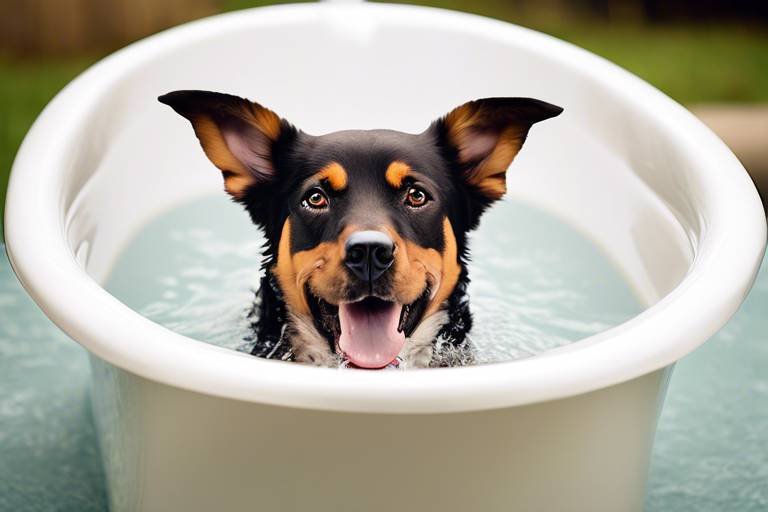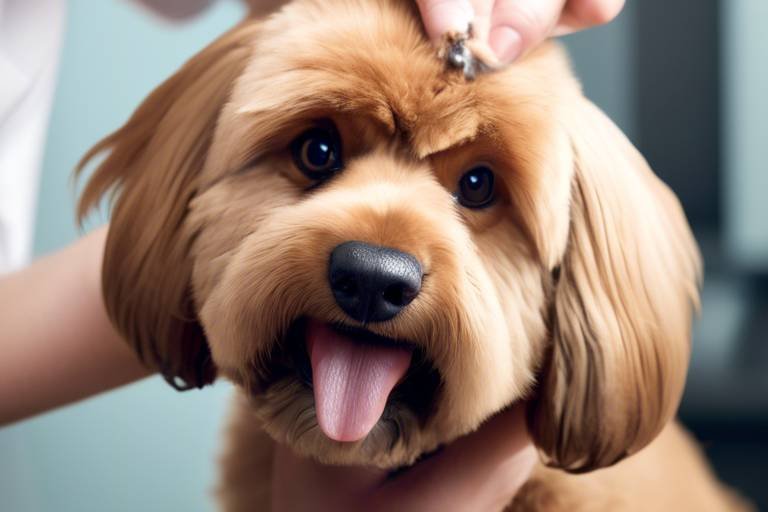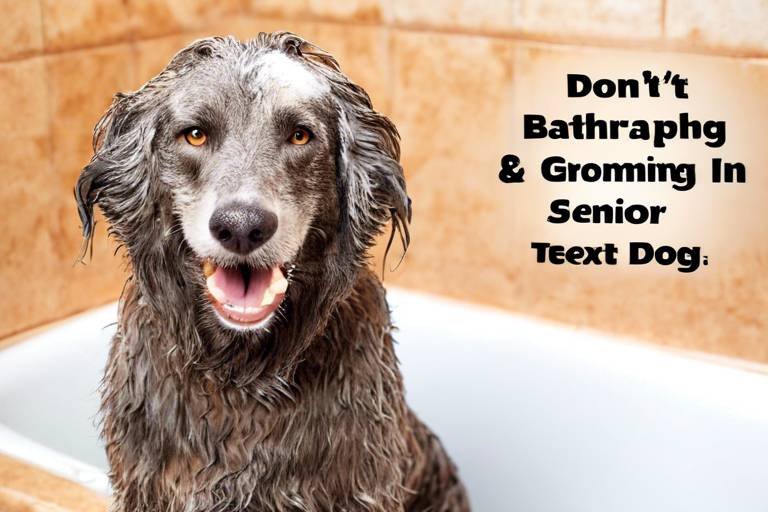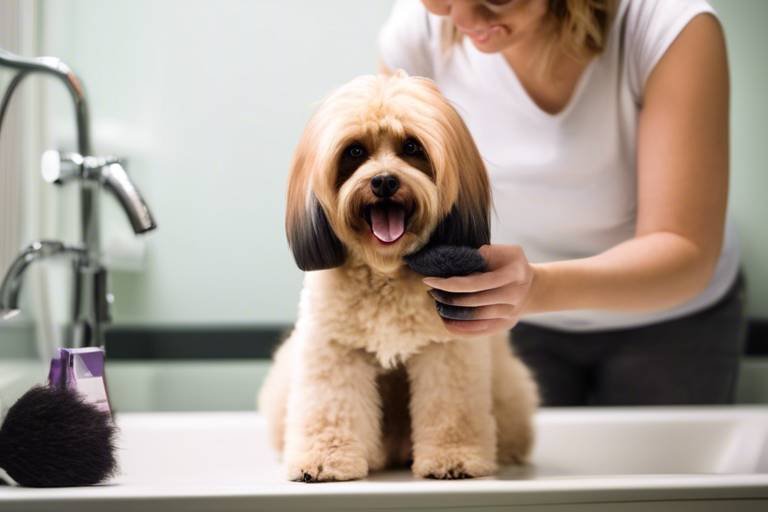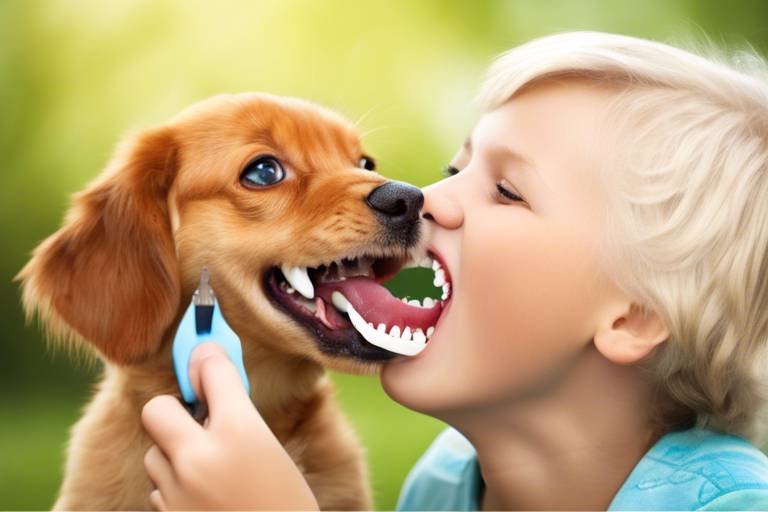The Benefits of Regular Grooming for Indoor Cats
When it comes to our furry friends, especially indoor cats, grooming is more than just a luxury—it's a necessity! Regular grooming not only enhances your cat's appearance but also plays a crucial role in their overall health and well-being. Imagine your cat, with its soft, shiny coat, looking up at you with those big, trusting eyes. That’s the result of your commitment to grooming, and it comes with a plethora of benefits that every cat owner should be aware of. So, let’s dive into the essential advantages of grooming indoor cats that will leave you and your feline friend purring in delight!
One of the most noticeable benefits of regular grooming is the significant improvement in your cat's coat health. Think of grooming as a spa day for your feline! By brushing your cat consistently, you help to remove loose fur, dirt, and debris that can accumulate in their coat. This not only keeps their fur shiny and clean but also reduces the risk of matting. Matting can lead to skin irritations and discomfort for your pet, so regular grooming acts as a preventive measure. Plus, a well-groomed cat is a happy cat!
Let’s face it: shedding can be a big headache for indoor cat owners. Those little tufts of fur seem to end up everywhere—on your clothes, your furniture, and even in your food! Regular grooming can significantly reduce shedding, capturing loose hair before it has a chance to float around your home. With consistent brushing, you’ll notice a decrease in the amount of fur that ends up on your couch or that favorite sweater. It's a win-win situation for both you and your cat!
By controlling shedding through grooming, you also help to minimize allergens in your home. Pet dander can be a significant trigger for allergies, and fewer allergens mean a healthier living environment for both you and your guests. Imagine having friends over without worrying about sneezing fits or itchy eyes! Regular grooming is a simple yet effective way to create a more comfortable space for everyone.
Grooming does wonders for your cat’s skin too! When you brush your feline, you're not just removing dirt and loose fur; you're also stimulating the natural oils in their skin. This promotes hydration and prevents dryness, which can lead to a variety of skin conditions. Just like humans, cats can suffer from dry skin, and regular grooming helps to keep their skin healthy and moisturized. A happy cat means a happy home!
Regular grooming sessions are also an excellent opportunity for you to check your cat for any lumps, bumps, or skin problems. Think of it as a mini health check-up that you can do right at home! Early detection of potential health issues can lead to timely veterinary care, ensuring that your furry friend remains in tip-top shape. A little extra attention during grooming can go a long way in keeping your cat healthy.
Grooming is not just about maintaining your cat's appearance; it's also a fantastic way to strengthen the bond between you and your pet. The act of grooming can be soothing and enjoyable for both of you, fostering trust and companionship. As you brush away those tangles, you’re also brushing away stress and building a deeper connection. It’s a beautiful ritual that can turn into one of your favorite shared moments.
Speaking of stress, did you know that grooming can act as a calming ritual for indoor cats? Many cats experience anxiety, and a regular grooming routine can help alleviate that stress. When you take the time to groom your cat, you’re providing them with a comforting experience that can lead to a more relaxed demeanor. A relaxed cat is a healthier cat, and a happy cat makes for a happy home!
Regular grooming can also lead to improved behavior in your feline friend. Cats that are groomed consistently tend to exhibit fewer anxiety-related issues, making them easier to handle and care for. You might find that your cat becomes more sociable and less prone to hiding or acting out. It's as if grooming creates a sense of security for them, allowing them to feel more at ease in their environment.
Finally, let’s talk about hygiene. Grooming contributes to better overall hygiene by keeping your cat clean and free from parasites. Regular brushing helps to keep their coat free from dirt and debris, reducing the risk of infestations from fleas and ticks. This practice is essential for maintaining a healthy indoor environment for both you and your pet. After all, a clean cat is a happy cat!
- How often should I groom my indoor cat? It depends on the breed and coat length, but generally, once a week is a good rule of thumb.
- What tools do I need for grooming? A good quality brush, a comb, and nail clippers are essential tools for grooming your cat.
- Can grooming help with shedding? Absolutely! Regular grooming helps to capture loose hair and significantly reduce shedding.
- Is grooming stressful for cats? It can be, but with proper techniques and a calm environment, it can also be a soothing experience.
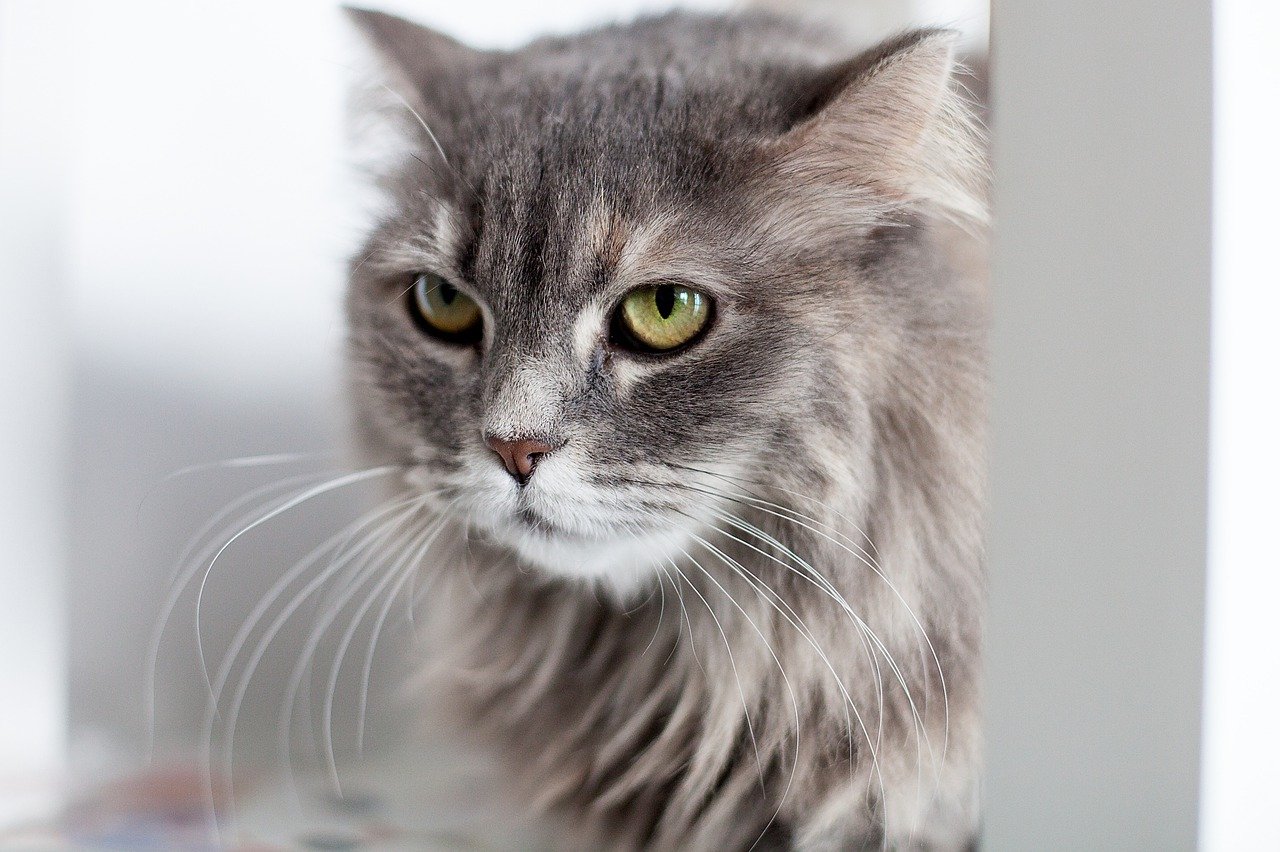
Improved Coat Health
This article explores the essential advantages of grooming indoor cats, including health benefits, bonding opportunities, and overall well-being, to help cat owners understand its importance.
When it comes to our feline friends, a healthy coat is not just about looks; it’s a reflection of their overall health and well-being. Regular grooming plays a pivotal role in keeping your indoor cat's coat in top-notch condition. By engaging in this practice, you're actively removing loose fur, dirt, and debris that can accumulate and cause discomfort. Imagine your cat's fur as a beautiful tapestry; if it’s not regularly maintained, it can quickly become frayed and messy. With consistent grooming, you’re ensuring that your cat’s fur remains not only shiny but also clean.
One of the primary benefits of grooming is the prevention of matting. Cats, especially those with longer fur, can experience tangles that can lead to painful mats if left unattended. These mats can pull on the skin, causing irritation and discomfort. Regular brushing sessions can help you stay ahead of this issue, allowing you to keep your cat’s coat smooth and tangle-free. Think of it as giving your cat a mini spa treatment—who doesn’t love a good pampering session?
Additionally, grooming aids in the distribution of your cat's natural oils, which are essential for a lustrous coat. These oils act like a protective barrier, keeping the skin hydrated and preventing dryness. A well-groomed coat is less likely to suffer from skin irritations or conditions that can arise from neglect. Just like how you might apply lotion to keep your skin soft, grooming helps your cat maintain a healthy skin barrier.
Moreover, the act of grooming can serve as a bonding experience between you and your cat. As you brush through their fur, you’re not just enhancing their coat health; you’re also creating a sense of trust and companionship. Cats are sensitive creatures, and the gentle strokes of a brush can be incredibly soothing for them. You might even notice your cat purring contentedly as you groom them, which is a clear sign that they’re enjoying the experience.
In summary, regular grooming is a vital practice that contributes significantly to your indoor cat’s coat health. By removing debris, preventing matting, distributing natural oils, and fostering a bond, you’re ensuring that your cat remains not only beautiful but also healthy and happy. So, grab that brush and start a routine that benefits both you and your furry friend!
- How often should I groom my indoor cat? It depends on the breed and length of fur, but most cats benefit from grooming at least once a week.
- What tools do I need for grooming? A good quality brush, comb, and possibly nail clippers are essential tools for grooming your cat.
- Can grooming help with shedding? Yes, regular grooming helps reduce shedding by capturing loose hair before it ends up on your furniture.
- What if my cat doesn’t like being groomed? Start slow, use treats, and create a calm environment to help your cat feel more comfortable with grooming.
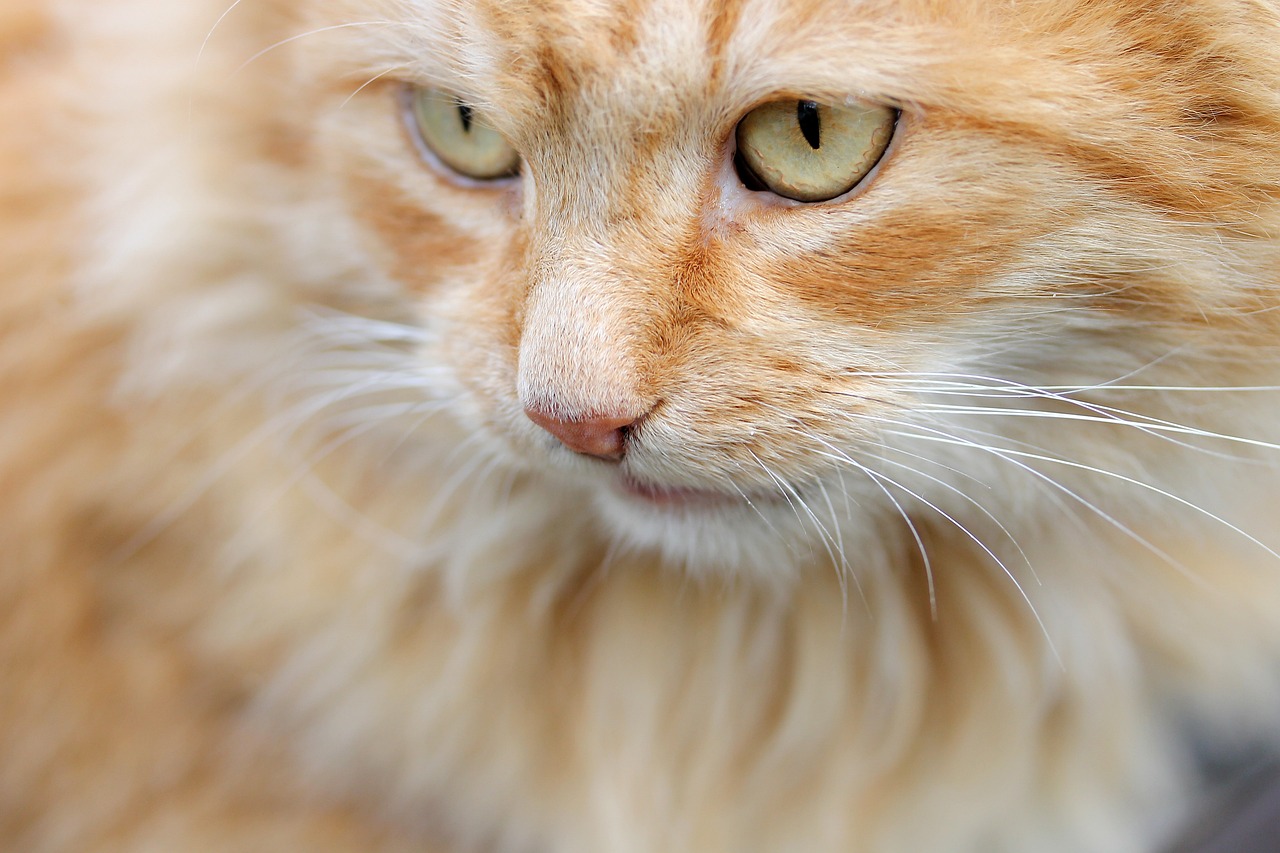
Reduced Shedding
Regular grooming is a game changer when it comes to managing shedding in indoor cats. If you've ever found yourself covered in cat hair after a cuddle session, you know exactly what I mean! Shedding can be a major concern for cat owners, especially those living in smaller spaces where fur can accumulate quickly. By incorporating a grooming routine into your cat's life, you can significantly reduce the amount of fur that ends up on your furniture, clothes, and everywhere else in your home.
When you brush your cat regularly, you're not just removing loose hair; you're also capturing dirt, dander, and other debris that may cling to their coat. This proactive approach minimizes the amount of hair that gets released into your environment, making your home cleaner and more comfortable. Think of it as a two-for-one deal: a cleaner cat and a cleaner home!
Moreover, the type of grooming tool you use can impact shedding levels. For instance, slicker brushes are fantastic for long-haired breeds, while rubber brushes work wonders on short-haired cats. Here's a quick comparison of some popular grooming tools:
| Grooming Tool | Best For | Benefits |
|---|---|---|
| Slicker Brush | Long-haired cats | Removes tangles and loose fur |
| Rubber Brush | Short-haired cats | Gathers loose hair and massages the skin |
| Undercoat Rake | Double-coated breeds | Reaches the undercoat to remove dead hair |
In addition to the immediate benefits of reduced shedding, regular grooming can also improve your cat's overall health. Less shedding means fewer allergens in your home, which is particularly important for guests or family members with allergies. It’s like creating a little oasis of comfort for everyone!
So, why not make grooming a part of your daily routine? Not only will you enjoy a fur-free home, but your feline friend will also appreciate the attention and care. Remember, a well-groomed cat is a happy cat – and a happy cat means a happy owner!
- How often should I groom my indoor cat?
It's generally recommended to groom your cat at least once a week, but long-haired breeds may require more frequent grooming, even daily. - What tools do I need for grooming?
The tools you need will depend on your cat's coat type. Common tools include slicker brushes, rubber brushes, and combs. - Can grooming help with my cat's anxiety?
Yes! Regular grooming can be a calming experience for your cat, helping to reduce anxiety and stress.
Minimized Allergens
One of the most significant advantages of regular grooming for indoor cats is the minimization of allergens in your home. Cats, like many pets, naturally shed dander, which is a common allergen that can affect not only cat owners but also visitors. When you groom your cat, you're not just keeping their coat looking fabulous; you're actively reducing the amount of dander that floats around your living space. Think of it as a two-for-one deal: your cat gets a spa day, and your home becomes a healthier environment.
During grooming sessions, you effectively capture loose fur and dander that would otherwise end up on your furniture, clothing, and floors. This is particularly beneficial for individuals who suffer from allergies. By maintaining a regular grooming schedule, you can significantly cut down on these allergens, making your home more inviting for everyone. Plus, it’s a fantastic way to keep your living space looking tidy and well-kept.
To illustrate the impact of grooming on allergens, consider the following table:
| Grooming Frequency | Allergen Levels |
|---|---|
| Daily Grooming | Low |
| Weekly Grooming | Moderate |
| Monthly Grooming | High |
As you can see, the more frequently you groom your cat, the lower the allergen levels in your home. This is a simple yet effective strategy to keep your living environment comfortable for everyone. So, the next time you brush your feline friend, remember that you’re not just pampering them; you’re also creating a healthier home for yourself and your loved ones.
In addition to reducing allergens, grooming allows you to monitor your cat's overall health. During these sessions, you can easily spot any changes in their skin or coat condition, which could indicate underlying health issues. This proactive approach to grooming not only benefits your cat but also enhances your peace of mind as a cat owner.
In conclusion, regular grooming is a win-win situation for both you and your indoor cat. It minimizes allergens, promotes a healthier living environment, and strengthens your bond with your furry companion. So, grab that brush, and let the grooming begin!
- How often should I groom my indoor cat? - It is generally recommended to groom your indoor cat at least once a week, but daily grooming can provide even more benefits.
- What tools do I need for grooming? - Basic grooming tools include a brush, comb, and occasionally a grooming glove. Choose tools based on your cat's coat type.
- Can grooming help with my cat's anxiety? - Yes! Regular grooming can be a calming ritual for your cat, helping to reduce stress and anxiety.
- What if my cat doesn’t like being groomed? - Start slowly and make grooming a positive experience with treats and praise. Gradually increase the duration of grooming sessions.
Healthier Skin
When it comes to our beloved indoor cats, their skin health is often overlooked, yet it plays a crucial role in their overall well-being. Regular grooming is not just about keeping that gorgeous coat shiny; it's also about ensuring that the skin underneath is in tip-top shape. Grooming stimulates the natural oils in your cat's skin, which is essential for maintaining hydration. Think of it as a spa day for your feline friend, where the gentle brushing helps distribute these oils evenly across their skin. This process can significantly reduce dryness, which is a common issue among indoor cats, especially in climates with low humidity.
Moreover, healthy skin acts as a barrier against various irritants and allergens. Without regular grooming, dirt, dead skin cells, and other debris can accumulate, leading to irritation and potential skin conditions. By brushing your cat regularly, you’re not only keeping their coat clean but also preventing the buildup of harmful substances that could lead to discomfort or infections. This proactive approach can save you from costly vet visits and ensure that your kitty remains happy and comfortable.
Let’s not forget the role of grooming in detecting skin problems early. During grooming sessions, you have the perfect opportunity to inspect your cat’s skin for any unusual bumps, lumps, or signs of irritation. Early detection is key to addressing any health issues before they escalate. Just like humans benefit from regular check-ups, our cats thrive when we take the time to notice the little changes in their skin health.
In summary, regular grooming is a simple yet effective way to promote healthier skin for your indoor cat. Not only does it keep their coat looking fabulous, but it also enhances their overall health and comfort. So grab that brush, and make grooming a delightful routine for both you and your furry companion!
- How often should I groom my indoor cat? It typically depends on the breed and length of fur, but most cats benefit from grooming at least once a week.
- What tools do I need for grooming? A good quality brush, a comb, and perhaps some nail clippers are essential for a complete grooming kit.
- Can grooming help with my cat's shedding? Yes, regular grooming helps remove loose hair and reduces shedding significantly.
- What if my cat doesn't like being groomed? Start slowly and make it a positive experience with treats and gentle handling. Over time, your cat may come to enjoy grooming sessions.
Early Detection of Health Issues
Regular grooming sessions are not just about keeping your indoor cat looking fabulous; they are also an essential part of monitoring your feline friend's health. During grooming, you'll have the perfect opportunity to check for lumps, bumps, or any unusual skin conditions. Think of it as a mini health check-up that you can perform right in the comfort of your home. It's like being a detective for your cat's well-being!
When you run your fingers through your cat's fur, you might notice changes that could indicate health issues. For instance, if you feel a hard lump or a sudden patch of missing fur, these could be signs of something more serious. Early detection is crucial because many health problems, such as tumors or skin infections, can be treated more effectively when caught early. This proactive approach can lead to better outcomes and could even save your cat's life.
Moreover, grooming allows you to observe your cat's skin condition closely. Are there any signs of redness, irritation, or excessive dryness? These could be indicators of allergies or other dermatological issues. By keeping an eye on your cat's skin health, you can address potential problems before they escalate.
Here’s a quick overview of what to look for during grooming:
- Lumps or bumps: Any unusual growths should be examined by a vet.
- Skin irritations: Redness or rashes might indicate an allergic reaction.
- Changes in coat condition: Dull, dry, or patchy fur can signal nutritional deficiencies or health issues.
- Excessive scratching or biting: This could point to parasites or skin conditions.
Incorporating regular grooming into your routine not only helps maintain your cat's appearance but also fosters a deeper connection between you and your furry friend. The more time you spend with your cat during these sessions, the more familiar you become with their unique body and behavior. This familiarity enhances your ability to notice any changes, making you a more effective advocate for your cat’s health.
Q: How often should I groom my indoor cat?
A: It depends on the breed and coat type. Long-haired cats typically require grooming several times a week, while short-haired cats may only need it once a week.
Q: What tools do I need for grooming?
A: Basic grooming tools include a good brush, a comb, and nail clippers. You may also want to have some cat-friendly wipes on hand for cleaning their face and paws.
Q: Can grooming help with shedding?
A: Absolutely! Regular grooming helps remove loose hair and reduces the amount of fur that ends up on your furniture and clothes.
Q: What if my cat doesn't like being groomed?
A: Start slowly and make it a positive experience with treats and praise. Gradually increase the grooming time as your cat becomes more comfortable.
Bonding Time
Grooming your indoor cat is not just about keeping them looking fabulous; it's also a fantastic opportunity to strengthen your bond with your furry friend. Think of grooming as a shared ritual, much like a cozy evening spent watching movies together. It’s a time when both you and your cat can relax, connect, and enjoy each other's company.
During grooming sessions, your gentle touch and soothing voice can help your cat feel safe and loved. This is particularly important for indoor cats, who may not have as many opportunities for social interaction. The act of brushing can be incredibly calming for them, almost like a mini spa day. Imagine the feeling of a soft brush running through your hair; it’s comforting, right? That’s exactly how your cat feels when you groom them.
Moreover, grooming can enhance the trust between you and your cat. When they see you reaching for the brush, they begin to associate it with positive experiences, like gentle strokes and affection. This trust is essential for their overall well-being, as it encourages them to be more relaxed and open around you. It’s like building a bridge of trust that connects your hearts.
To make the most of your grooming sessions, consider the following tips:
- Choose the Right Tools: Use brushes that are suitable for your cat's coat type. A slicker brush works wonders for long-haired cats, while a simple bristle brush is great for short-haired ones.
- Create a Calm Environment: Find a quiet space free from distractions. This will help both you and your cat focus on the moment.
- Incorporate Treats: Reward your cat with treats during or after grooming to create a positive association.
By integrating these practices into your grooming routine, you’re not just maintaining your cat's appearance; you’re also cultivating a deeper connection that enhances their emotional health. Remember, every stroke of the brush is a step toward a stronger relationship, making grooming a win-win situation for both of you!
Q1: How often should I groom my indoor cat?
A1: Generally, long-haired cats should be groomed at least 2-3 times a week, while short-haired cats can be groomed once a week. However, this can vary based on your cat's specific needs.
Q2: What tools do I need for grooming?
A2: The tools you need depend on your cat's coat type. Common grooming tools include brushes, combs, and nail clippers. Always choose tools that are suitable for your cat's fur.
Q3: How can I make grooming enjoyable for my cat?
A3: Start slowly, use gentle strokes, and offer treats to create a positive experience. Make it a regular part of your routine so your cat becomes accustomed to it.
Q4: What if my cat doesn’t like being groomed?
A4: If your cat resists grooming, try short sessions and gradually increase the duration. You can also consult your veterinarian for tips on how to make grooming more enjoyable for your pet.
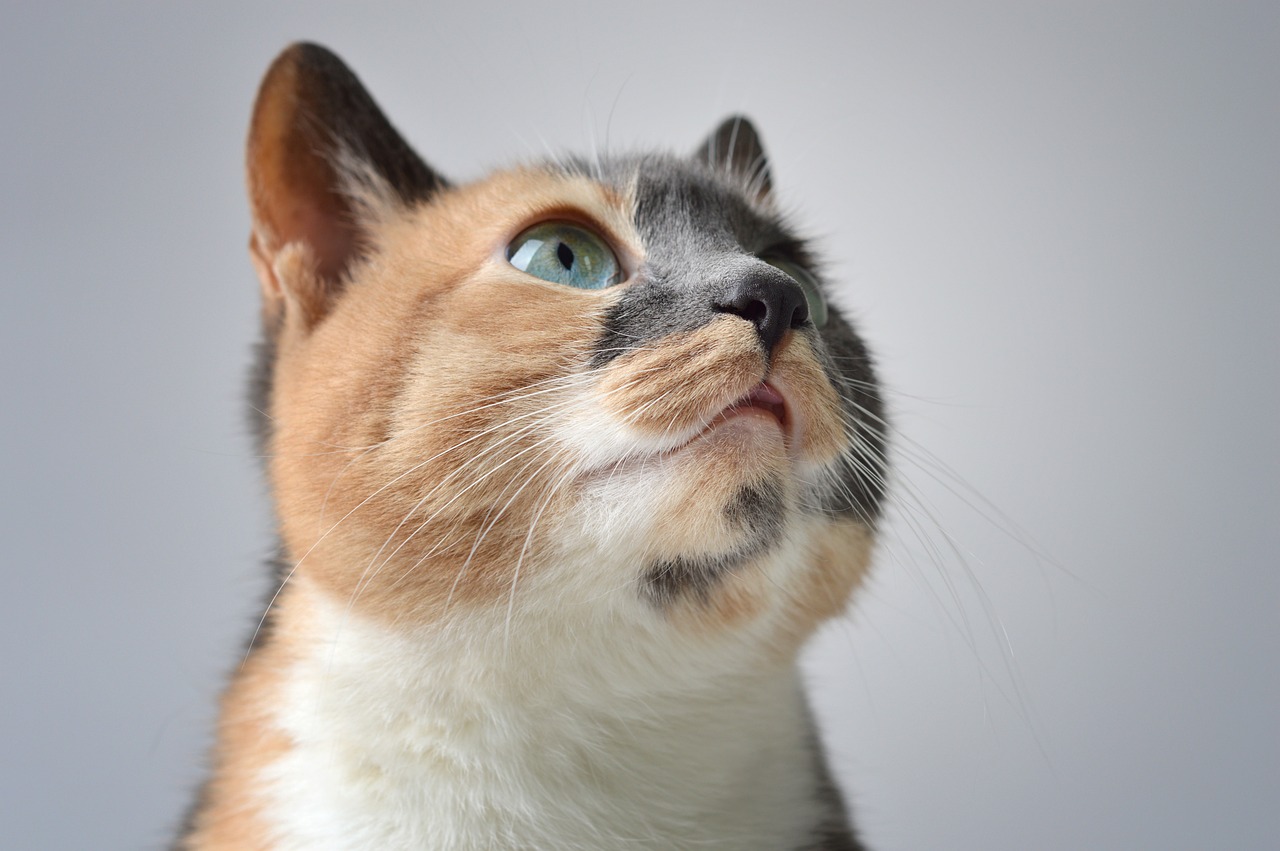
Stress Reduction
Grooming your indoor cat is not just about keeping their coat shiny; it's also a fantastic way to help them unwind and feel more at ease in their environment. Think of grooming as a mini spa day for your feline friend! When you take the time to brush or comb their fur, it can be a soothing experience that mimics the natural grooming behaviors cats exhibit with each other. This process can significantly reduce stress levels and create a calming atmosphere for both you and your pet.
Imagine how much better you feel after a nice massage or a relaxing bath. Cats experience similar benefits from grooming. The gentle strokes of a brush stimulate their skin, helping to release endorphins—the feel-good hormones. As a result, regular grooming sessions can turn into a bonding ritual that your cat looks forward to, rather than a chore. Plus, the tactile sensations from the grooming can help distract them from any anxiety they may be experiencing.
In addition to the immediate calming effects, grooming can also help mitigate long-term stress factors. For example, indoor cats can sometimes feel confined or bored, leading to anxiety-related behaviors like excessive meowing or scratching. By incorporating grooming into your routine, you provide mental stimulation and physical affection that can alleviate these feelings. Here are some ways grooming contributes to stress reduction:
- Routine and Predictability: Cats thrive on routine. Regular grooming sessions can create a predictable schedule that helps them feel secure.
- Physical Touch: Cats love being touched, and grooming offers that essential physical contact, which can be incredibly reassuring for them.
- Distraction: The focused attention during grooming can distract your cat from external stressors, such as loud noises or new visitors in the home.
Ultimately, the act of grooming can transform into a delightful experience that not only keeps your cat looking great but also plays a vital role in their emotional well-being. By making it a regular part of your routine, you can help ensure that your indoor cat remains happy, relaxed, and stress-free.
Q: How often should I groom my indoor cat?
A: It generally depends on the breed and coat type. Long-haired cats may require grooming several times a week, while short-haired cats can often be groomed once a week.
Q: What tools do I need for grooming?
A: Basic grooming tools include a good quality brush, a comb, and possibly nail clippers. Choose tools that suit your cat's coat type for the best results.
Q: Can grooming help with my cat's shedding?
A: Yes! Regular grooming helps remove loose fur, reducing shedding and keeping your home cleaner.
Q: What if my cat doesn't like being groomed?
A: Start slowly and make the experience positive. Use treats and gentle strokes to create a relaxed environment. If your cat continues to resist, consider consulting a veterinarian or a professional groomer for advice.
Behavioral Benefits
When it comes to our furry friends, grooming isn't just about keeping their coat looking fabulous; it's also a key player in their overall behavior and mental health. Have you ever noticed how a good grooming session can turn a grumpy cat into a purring ball of joy? Regular grooming can help your indoor cat feel more relaxed and secure in their environment. It's like a mini spa day that can significantly reduce anxiety and stress levels.
One of the most fascinating aspects of grooming is its ability to create a sense of routine and predictability. Cats are creatures of habit, and they thrive in environments where they know what to expect. By establishing a regular grooming schedule, you provide your cat with a comforting ritual that can help them feel more at ease. Think of it as a warm hug that reassures them everything is right in their world.
Moreover, grooming can help address behavioral issues that stem from anxiety or boredom. For example, if your cat is prone to destructive behaviors, such as scratching furniture or excessive meowing, regular grooming can serve as a positive outlet for their energy. It engages them mentally and physically, channeling their instincts into a productive activity instead of mischief. You might even find that your cat becomes more sociable and less skittish over time!
Here are some behavioral benefits of grooming that you might find interesting:
- Reduced Anxiety: The act of grooming can be soothing, helping to calm a nervous cat.
- Improved Socialization: Cats that are groomed regularly may become more comfortable with human interaction.
- Enhanced Playfulness: A relaxed cat is more likely to engage in play, leading to a happier and healthier lifestyle.
In essence, grooming is more than just a chore; it's a vital part of your cat's emotional well-being. By taking the time to groom your indoor cat, you're not only enhancing their physical appearance but also nurturing their mental health. It's a win-win situation that leads to a happier, more balanced feline companion. So, the next time you pick up that brush, remember that you're doing so much more than just fluffing their fur—you're helping to shape their behavior and overall happiness.
Q: How often should I groom my indoor cat?
A: It depends on the breed and coat type, but generally, a weekly grooming session is recommended for most indoor cats.
Q: What tools do I need for grooming?
A: A good quality brush, comb, and nail clippers are essential. Depending on your cat's coat, you may also need specialized tools like de-shedding tools or grooming gloves.
Q: Can grooming help with shedding?
A: Absolutely! Regular grooming helps remove loose hair and reduces shedding, making your home cleaner and more comfortable.
Q: What if my cat doesn't like being groomed?
A: Start slowly and make it a positive experience. Use treats and gentle strokes to create a calming atmosphere. Over time, your cat may learn to enjoy grooming sessions.
Enhanced Hygiene
When it comes to keeping your indoor cat healthy, grooming plays a vital role in enhancing their overall hygiene. Regular grooming not only keeps your cat looking fabulous but also ensures that they are free from dirt, debris, and pesky parasites. Think of grooming as a spa day for your feline friend—it's not just about vanity; it's about promoting a clean and healthy lifestyle.
By brushing your cat regularly, you're actively removing loose fur and dander that can accumulate in your home. This is especially important for indoor cats, who may not have the same opportunities to groom themselves as their outdoor counterparts. Less fur in your living space means a cleaner environment for both you and your pet. It’s a win-win situation!
Moreover, grooming helps to keep your cat's skin healthy. By stimulating the skin's natural oils, you’re promoting hydration and preventing dryness. This is crucial because dry skin can lead to irritation, itching, and even skin infections. When you brush your cat, you’re not just removing tangles; you’re also ensuring that their skin remains nourished and healthy.
Another key aspect of enhanced hygiene is the prevention of parasites. Regular grooming allows you to spot any signs of fleas, ticks, or other unwanted guests that may be lurking in your cat’s fur. Early detection can save you and your cat a lot of trouble down the road. If you notice any unusual behavior or skin issues during grooming, you can take action quickly, ensuring that your furry friend stays in tip-top shape.
To sum it all up, grooming your indoor cat is an essential practice that contributes to their overall hygiene and well-being. Not only does it keep them looking sharp, but it also helps to create a cleaner, healthier environment for everyone in your home. So, grab that brush and make grooming a regular part of your cat care routine—your feline companion will thank you for it!
- How often should I groom my indoor cat? - It depends on the breed and length of fur, but generally, once a week is a good rule of thumb. Long-haired breeds may require more frequent grooming.
- What tools do I need for grooming? - A good quality brush, comb, and possibly a grooming glove can help you manage your cat's coat effectively.
- Can grooming help with my cat's anxiety? - Yes! Regular grooming can be a soothing activity that helps reduce stress and anxiety in cats.
- What if my cat doesn't like grooming? - Start slowly and make it a positive experience with treats and praise. Gradually increase the time spent grooming as they become more comfortable.
- Is grooming necessary for short-haired cats? - Absolutely! Short-haired cats still benefit from regular grooming to remove loose hair and prevent hairballs.
Frequently Asked Questions
-
Why is grooming important for indoor cats?
Grooming is crucial for indoor cats as it helps maintain their coat health, reduces shedding, and prevents matting. It also provides an opportunity for early detection of health issues, ensuring your furry friend stays in tip-top shape.
-
How often should I groom my indoor cat?
Generally, it's recommended to groom your indoor cat at least once a week. However, long-haired breeds may need more frequent grooming, possibly every few days, to prevent tangles and mats.
-
What tools do I need for grooming?
Essential grooming tools include a good quality brush, a comb, and nail clippers. Depending on your cat's coat type, you might also consider a de-shedding tool or a grooming glove for a more enjoyable experience.
-
Can grooming help with my cat's allergies?
Absolutely! Regular grooming reduces shedding and dander, which can help minimize allergens in your home. This is especially beneficial for guests or family members who may have allergies to pet hair.
-
What are the signs that my cat needs grooming?
If you notice loose fur around your home, mats forming in your cat's coat, or if your cat seems uncomfortable when you pet them, it’s likely time for a grooming session. Regularly checking their coat can help you stay ahead of these issues.
-
Does grooming help with my cat's stress levels?
Yes! Grooming can be a soothing ritual for cats, helping them relax and feel secure. The gentle brushing can mimic the natural grooming behavior they experience with their feline friends, promoting a sense of calm.
-
Can I groom my cat if they don’t like it?
It's definitely possible! Start slowly and make the experience positive with treats and praise. Gradually introduce grooming in short sessions, and always pay attention to your cat's comfort level.
-
What should I do if I find a lump while grooming?
If you discover a lump or bump while grooming, don't panic! It's best to schedule a visit to the vet for a professional evaluation. Early detection is key to addressing any potential health issues.





